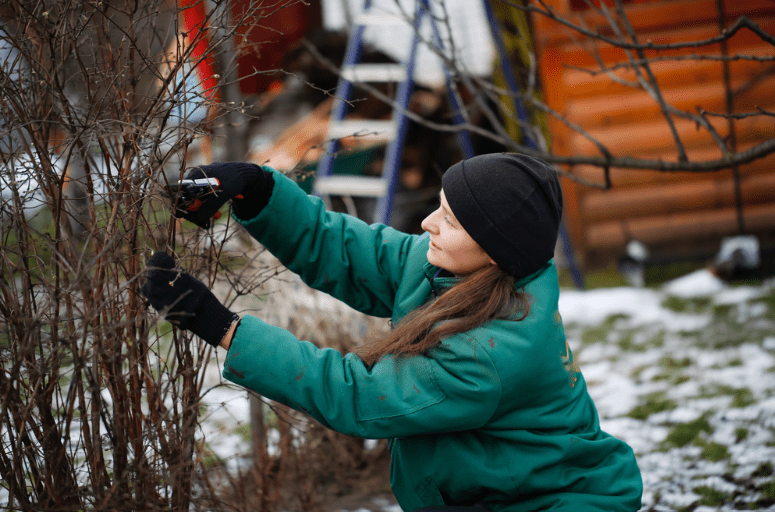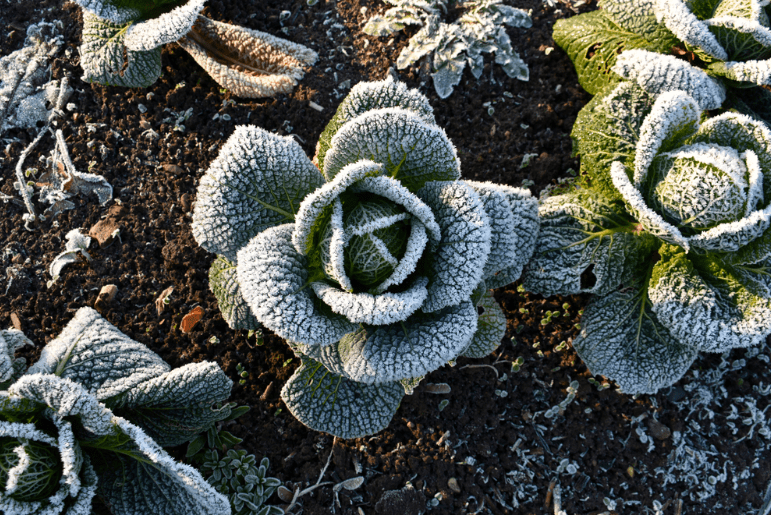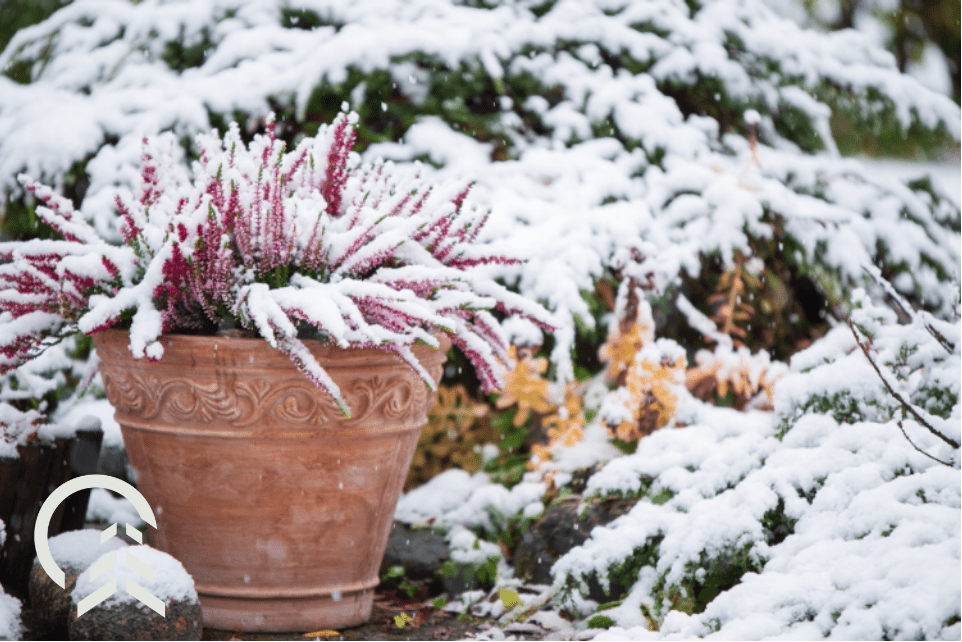The winter months in the Chicagoland area can feel like a very long time, especially when you miss the summer sunshine and being able to unwind by tending to your garden. However, there are still things that you can do to still stay active and enjoy your time outdoors even when the weather can be a bit chilly.
Key Takeaways
- Extend Your Gardening Season: Winter gardening allows you to enjoy fresh produce and vibrant plants year-round by choosing hardy varieties and using protective techniques.
- Protect Your Plants: Use sunny winter days to inspect and care for your garden, and employ methods like cold frames, row covers, and mini hoop tunnels to extend plant life outdoors.
- Indoor Gardening Activities: When the weather keeps you indoors, plan your garden, start seeds, clean and sharpen tools, and reorganize your gardening space to stay productive.
What is Considered Winter Gardening?
Winter gardening is all about extending your green thumb into the colder months. While many think gardening is only for spring and summer, winter gardening proves that you can enjoy fresh greens and vibrant plants year-round. It involves choosing hardy plant varieties that thrive in colder temperatures, using mulch to protect plant roots, and employing techniques like covering plants during frosts. Whether you’re looking to harvest vegetables, protect your perennials, or simply keep your garden looking lively, winter gardening opens up a whole new world of horticultural possibilities.
Ways to Protect Plants from Winter Weather
Take Advantage of Sunny Days
Sunny days during winter are perfect for checking on your garden and giving your plants a little extra care. The warmth from the sun can make the cold more bearable, allowing you to spend more time outdoors. Use these days to inspect your plants for any signs of stress or damage, remove debris that could harbor pests, and water your plants if the soil is dry.
Remember, working outdoors on a sunny day can feel much warmer than on a cloudy, windy day. So, make the most of any sunny days we have in the winter months and get out to do some gardening. A sunny day in the 30s, or even the 20s, can feel much warmer than a cloudy, windy day in the 40s. Embrace the sunshine to make your winter gardening tasks more enjoyable and productive.
Head Outside and Do Some Pruning or Snow Removal
Winter is a fantastic time to do some pruning because the structure of the plant is in full view, with few or no leaves. When pruning, use the DDD rule first: prune out any Dead, Diseased, or Damaged branches. Once this is done, go back through and shape the plant.
Be cautious with early-blooming trees and shrubs such as lilacs, rhododendrons, magnolias, forsythia, and azaleas. These plants form their flower buds in the summer or early fall of the previous year. This means that if you prune them in the winter, you’ll be cutting off the buds, resulting in no flowers blooming in the spring.

If there is heavy snow outside, use a broom to remove it with a light upward sweeping motion. Snow’s weight can cause damage to evergreens like arborvitae and boxwoods if not removed.
Cold Frames
Cold frames are a great way to extend the life of your plants outdoors during the winter. They are essentially mini-greenhouses that provide a bit of extra warmth and protection. However, it’s important to note that cold frames aren’t a permanent solution for keeping plants outside all winter. They can help you get a few more weeks out of your fall crops or give your early spring plants a head start, but they won’t protect plants from the most severe winter conditions. Use cold frames to create a more controlled environment, helping plants transition through the cooler months more comfortably.
Mini Hoop Tunnels or Hoop Houses
Mini hoop tunnels or hoop houses are another effective method for protecting your plants during the winter. These structures are made by bending flexible pipes or rods over garden beds and covering them with plastic or fabric. They create a greenhouse-like environment that shields plants from harsh weather conditions, such as frost, snow, and wind. While mini hoop tunnels can provide significant protection, they are best used to extend the growing season rather than as a full winter solution. They are ideal for cool-season crops that can tolerate lower temperatures but still need some protection to thrive.
Row Covers
Row covers are a versatile and easy way to protect your plants from frost, wind, and pests during the winter. These lightweight, fabric covers can be placed directly over your plants to provide an extra layer of insulation while still allowing light, air, and moisture to reach them. Row covers can help maintain a slightly warmer microclimate around your plants, ensuring they survive unexpected cold snaps. They are especially useful for vegetables and small plants that need just a bit of extra protection to make it through the winter.
What to Plant in the Winter
As temperatures begin to dip and the ground begins to frost overnight, many assume gardening season is over. However, with the right plant choices, you can keep your garden productive and vibrant even during the coldest months. Here are some top picks for what to plant in your winter garden to ensure a bountiful and hardy harvest:
Root Vegetables
Root vegetables are excellent for winter gardening because they thrive in cool soil and can even sweeten with a touch of frost. Consider planting carrots, beets, and turnips in the late summer and early fall. These vegetables are hardy and can be harvested well into the winter months. Just make sure to mulch heavily to protect them from extreme cold and to keep the soil workable.
Rugged Leafy Greens
Rugged leafy greens like kale, Swiss chard, and collard greens are perfect for winter gardens. These greens can withstand colder temperatures and often taste better after a frost. They provide nutritious, fresh produce throughout the winter and can be harvested multiple times. Just pick the outer leaves, and the plants will keep producing.
Hardy Vegetables

Certain hardy vegetables such as Brussels sprouts, cabbage, and broccoli are ideal for winter planting. These vegetables are built to survive the cold and can continue to grow even when temperatures dip. Brussels sprouts, in particular, are known to improve in flavor after being exposed to a light frost.
Winter Herbs
Don’t forget about herbs in your winter garden. Varieties like thyme, sage, and rosemary are quite resilient and can add fresh flavor to your winter dishes. While some herbs might need a bit more protection during the harshest weather, they can still thrive with a little care. Plant them in pots that can be brought inside during extreme cold spells.
Hardest Plants to Grow in the Winter
Gardening in Zone 5 presents unique challenges during the winter months, with average minimum temperatures ranging from -10 to -20 degrees Fahrenheit. Here are some of the hardest plants to grow in Chicagoland’s winter conditions:
Tender Annuals
Tender annuals like impatiens, petunias, and marigolds struggle to survive in winter. These plants thrive in warm weather and cannot tolerate frost. Even with extra protection, they are unlikely to make it through the cold months, so it’s best to plan to replant them in the spring.
Delicate Perennials
Delicate perennials such as Red Hot Poker plants, Scabiosa, or Gaura can be challenging to keep alive during winter. These plants may not handle severe frost well and might require heavy mulching or indoor care to survive the season. Their delicate nature makes them more susceptible to winter damage, so extra care and protection are necessary.
Tropical and Subtropical Plants
Tropical and subtropical plants like hibiscus, bougainvillea, and banana plants are ill-suited for winter conditions. These plants need warmth and humidity, conditions that are impossible to maintain during winter without a controlled indoor environment. For these plants, it’s best to bring them indoors.
When the Weather is Bad Outside
When the weather isn’t suitable for working outdoors, there are plenty of indoor activities that can benefit your garden. Here are some things you can do to stay productive and prepare for the next gardening season.
Planning Your Garden

Winter is the perfect time to plan what you’d like to grow once the weather turns warmer. Take some time to dream up your ideal garden. Research new plants you want to try, decide on the layout of your garden beds, and make a list of supplies you have and what you’ll need. Having a clear plan will make your spring gardening much smoother and more enjoyable.
And if you haven’t already done so, having a gardening journal can be extremely helpful. Use the winter months to start or update your journal. Record what you planted last year, how well it grew, and any issues you encountered. Sketch out your garden beds and plan where you want to move plants or add new ones. Analyze last year’s notes and make changes to your fertilizing, mulching, or planting strategies. Having detailed records will help you improve your gardening techniques year after year.
Pick Your Seeds
Winter is a great time to purchase seeds for spring. Seed companies start shipping their packets to local garden centers and nurseries in early January. Nothing cures the ‘winter blahs’ like buying a few seed packets to try! While it’s too early to start planting seeds in the winter, January is the best time to find the widest selection available at the garden center.
Reorganize and Clean Your Garden Essentials
Take advantage of winter days to reorganize your gardening space. Sort through your tools and supplies, discard anything broken or unused, and create a tidy, efficient space where everything is easy to find. Whether it’s your shed, garage, or a designated corner of your home, getting organized will save you time and frustration when the busy gardening season arrives.
Also, consider giving your garden tools some TLC. Clean shovels, pruners, and trowels using a stiff brush to remove old soil. Wipe down metal surfaces with a little household oil, like WD-40 or mineral oil, to prevent rust. If you have wooden handles, consider painting them with a bright color to preserve the wood and make them easier to find in the garden. Sharpening your tools will ensure they’re in top shape for spring.
Bottom Line
The winter months in Chicagoland may be long and cold, but they offer unique opportunities for gardeners to stay active and prepare for the upcoming growing season. With the help of a little winter gardening ingenuity, you can enjoy fresh produce, protect your plants, and plan for spring. Whether you’re choosing hardy plants, utilizing sunny days for garden care, or taking on indoor tasks like tool maintenance and seed planning, there’s plenty to keep your green thumb busy. Embrace the winter season as a time for growth and preparation, ensuring your garden will be ready to thrive when the warmer weather returns.


